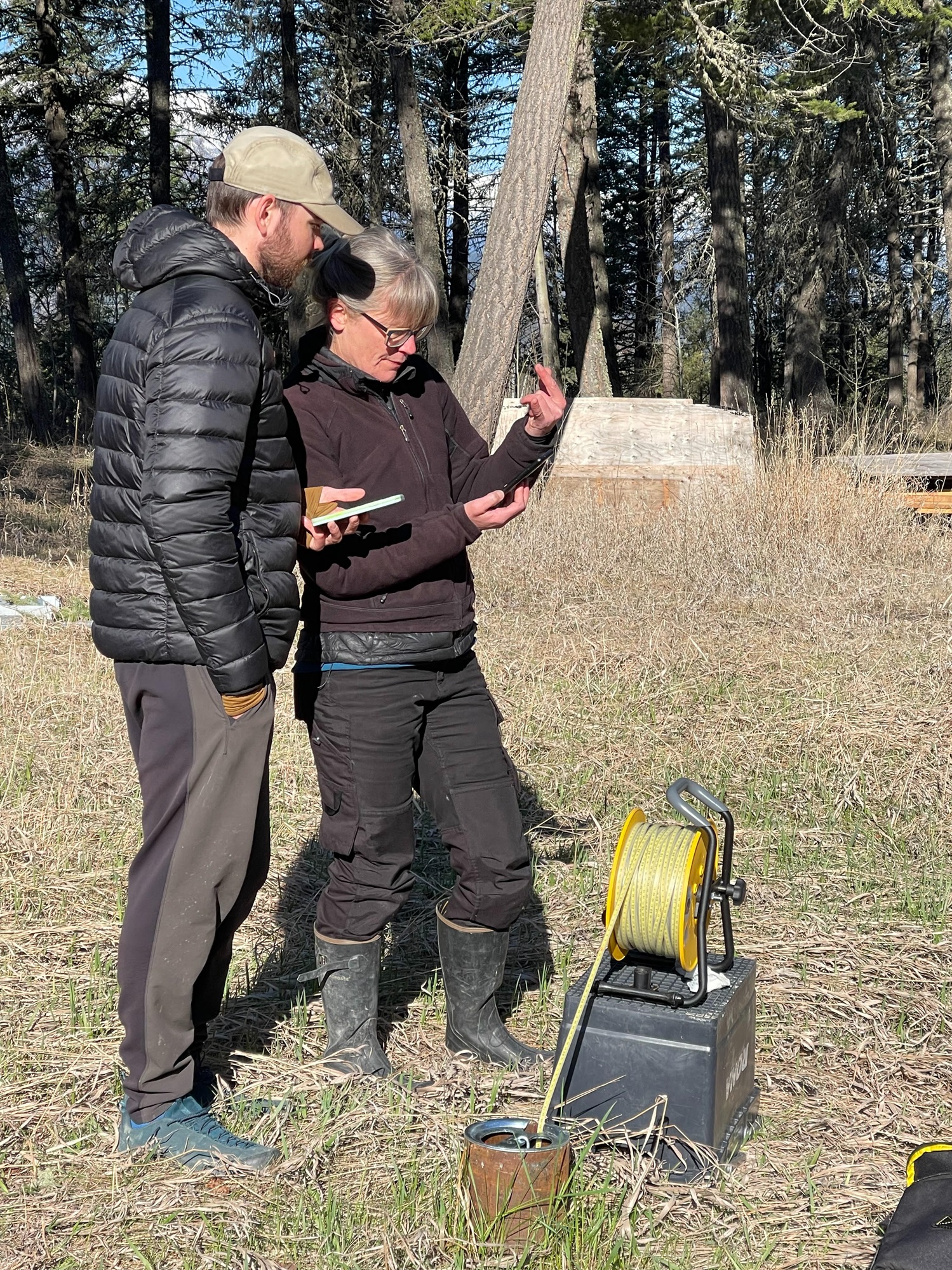Spring Groundwater Levels Highlight Variability and Need for Expanded Monitoring
By Living Lakes Canada
According to a recent survey conducted by Living Lakes Canada, 72% of respondents are highly concerned about groundwater in the Columbia Basin, with primary worries including drinking water, ecosystem health, agriculture and food security. Understanding groundwater systems and providing decision makers with current, localized information is essential to respond to these concerns and ensure a water secure future.
This is the goal of Living Lakes Canada’s Columbia Basin Groundwater Monitoring Program which is monitoring 32 volunteer observation wells across the region. According to data collected up to the end of March 2024, groundwater levels across different aquifers are responding differently to surface conditions, emphasizing the need for expanded monitoring.
Some wells recorded their lowest levels to date, including wells near Windermere, Skookumchuk, Brisco and Columbia Wetlands Benchlands. Longer-term trends for these wells suggest a decline in water level since monitoring began approximately five years ago, although statistical analyses have not yet been completed. Several of the wells in the program showed earlier rises in water levels in February and March compared to previous years, with some wells having levels at the end of March higher than in recent years. Others had water levels that were similar to previous years.
“We’ve observed different seasonal and multi-year trends in water levels between the different localities we’ve been monitoring for the last several years. This underscores the variability across aquifers with water levels responding on different time scales. For example water levels in some aquifers may respond to precipitation infiltrating within hours or days, whereas other aquifers may show a muted or delayed response over months, years, or even decades,” explains Carol Luttmer, Groundwater Program Field Operations and Data Manager with Living Lakes Canada.
“This variability is precisely why it’s important to monitor diverse aquifers to understand seasonal and long-term groundwater level trends as drought conditions and other climate impacts intensify.”
Groundwater levels can be compared to a bank balance: they show the amount of water stored in an aquifer, but not the rates of recharge (water entering) or discharge (water exiting). Just as a bank balance fluctuates with deposits and withdrawals, groundwater levels vary based on recharge and discharge rates. To avoid aquifer depletion and ensure long-term water availability, groundwater withdrawal should not cause a year-to-year decline in water levels.
Collecting aquifer-specific information helps support the sustainable management of this precious freshwater source.
Read the full data summary in the Watershed Bulletin recently published by Living Lakes Canada.
Complete groundwater datasets are available to researchers, decision makers, and the public on the Columbia Basin Water Hub.
To learn more about the Columbia Basin Groundwater Monitoring Program, visit: https://livinglakescanada.ca/
For questions regarding the program, please contact groundwater@livinglakescanada.

























Comments